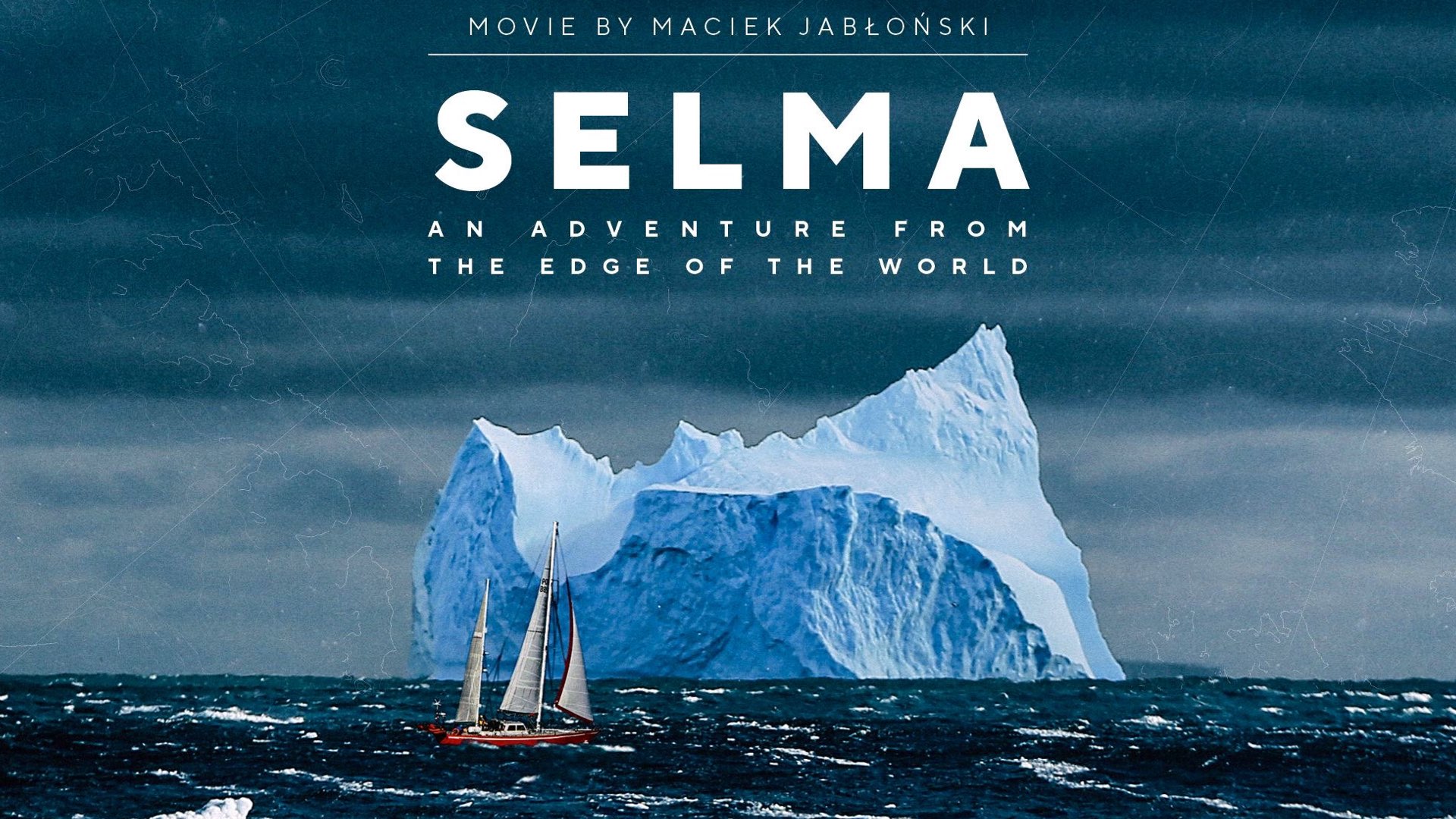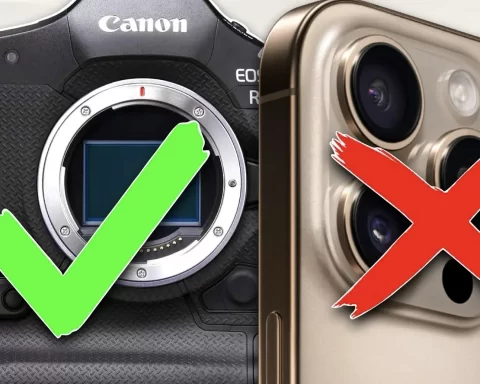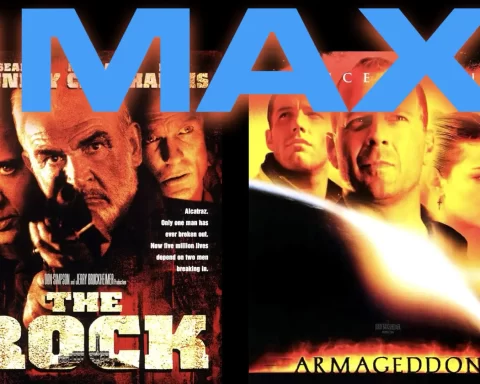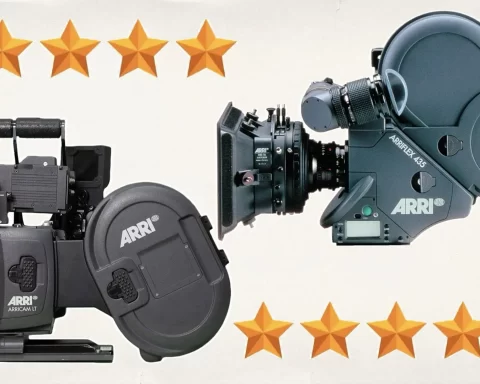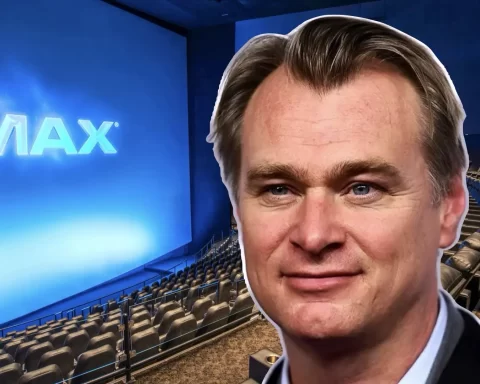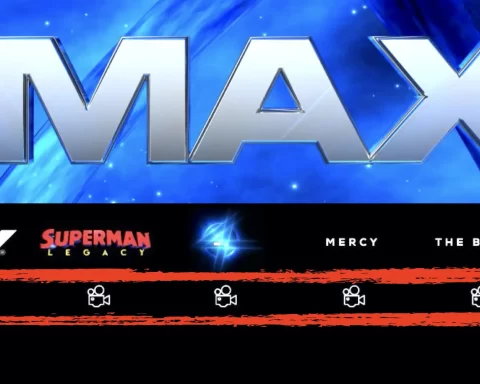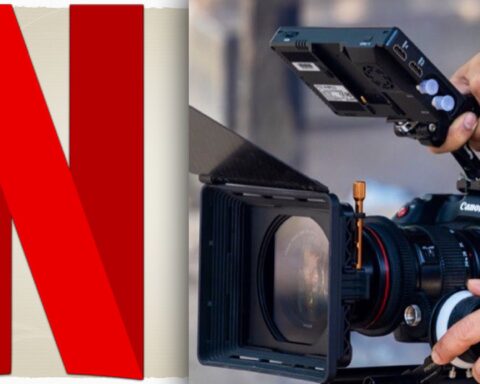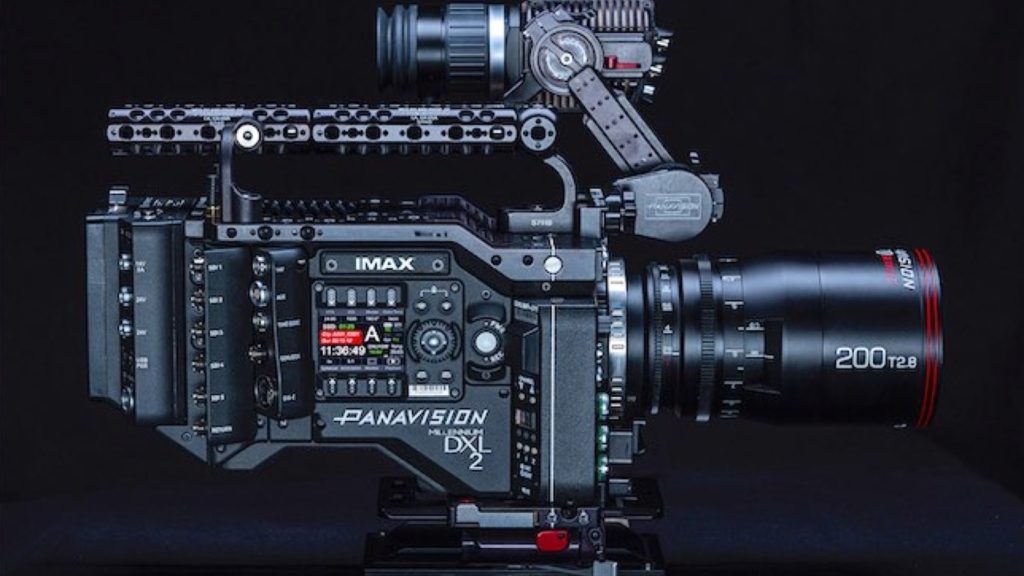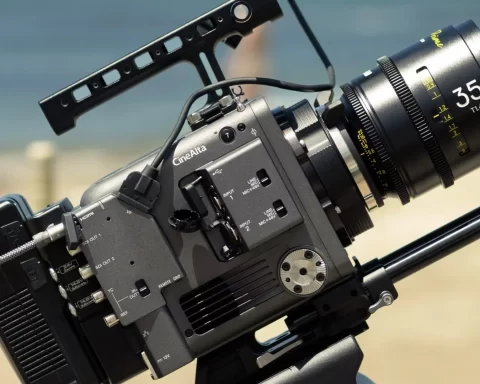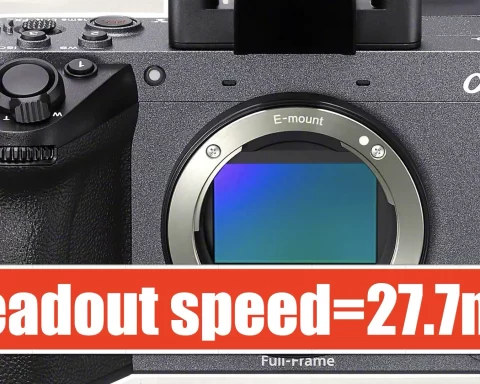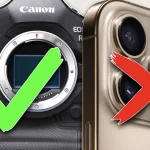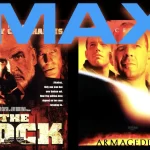“Selma” is a mega documentary project shot and directed by adventure filmmaker Maciek Jablonski. The film which has won several awards is also can be considered as a solid reference for how filmmakers can pursue their passion to bring dreams and extreme achievements to the big screen. Read below about the creation process of this unique piece of documentary from the filmmaking point of view.
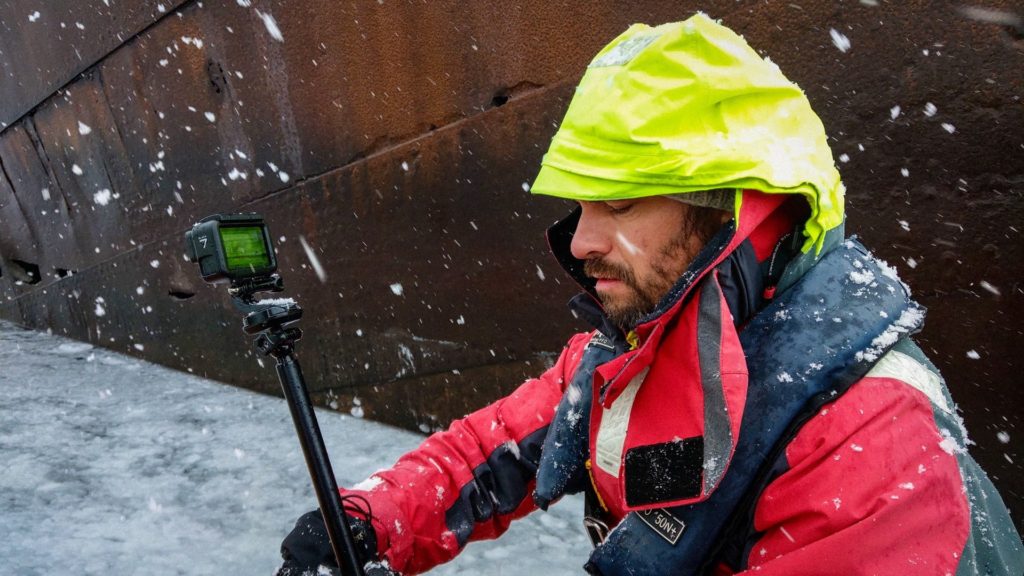
“Selma”: Maximization of the filmmaking challenge
“Selma – an adventure from the edge of the world,” tells the amazing story of the crew of Polish yacht S/Y “Selma Expeditions”, and their voyage to the most challenging waters in the world. Eleven crew members take on the heroic challenge of reaching The Bay of Whales in the Antarctic. They spent almost 4 months in close quarters of a small yacht to reach the southernmost spot on the marine map of the world. It is a tale of outstanding personalities, expansion of personal limits, and endurance. The crew’s reaching the Bay of Whales and setting a sailing world record (reaching point 78º 43’ 926’’ S, 163º 40’ 957’’ W) was entered in the Guinness World Records. The film was shot and directed by award-winning filmmaker, Maciek Jablonski.
Watch the trailer below:
Filmmaker Maciek Jablonski
Jablonski is a photographer and filmmaker working with National Geographic Poland. Owner of the F11 studio which is a film and photo studio based in Warsaw. Jablonski owns an MSc in Computer Science at Silesian University of Technology (Poland) and an MA in Photography and Film Production at Poznań Academy of Arts (Poland). He feels best working at social reportage and documentaries. One of his latest productions includes the documentary ‘Killithon’, showcasing the highest starting marathon in the world which begins at the Kilimanjaro summit in Africa. ‘Killithon’ has won Silver Winner award in the ‘Best Short Film’ and ‘Best Director – documentary’ categories at The Queen Palm International Film Festival in Palm Springs, California. We reached out to Jablonski to understand what it takes to deliver such an ambitious project with so much of filmmaking difficulties and challenges involved. Scroll down for the interview:
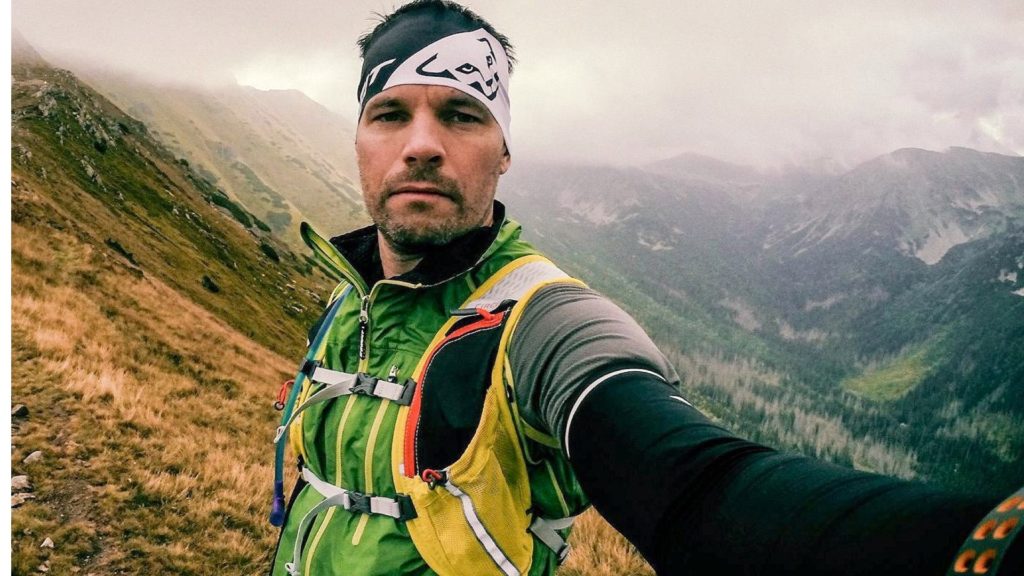
Heavy cameras are not an option
Y.M.Cinema Magazine: What was the equipment being used in this harsh production environment? (cameras, lenses).
Jablonski: It must be mentioned here that the shoots for the movie “Selma” were made during many Antarctic expeditions through many years of sailing there. In the film, I used shots from cruises to the Weddell Sea, South Georgia, several Selma expeditions to the South Shetland Islands, and the footage from the Rossa Sea cruise. For the purposes of the film, I have collected shots that have been made since probably 2014 and earlier.
Personally, I was not a crew member of the Selma’s Ross Sea expedition. I did not know the team at that time yet. I heard about this challenge from my friend Michael. So I took part in the later Selma cruise, much shorter and gentler but organized in early Antarctic spring. That time we already decided that it is high time to make the movie and I sailed as the director and cinematographer. I went there mainly to see what it was like to sail to Antarctica. To try some substitutes for what the boys may felt during the Ross Sea cruise… and of course for the love of adventure and nature 🙂
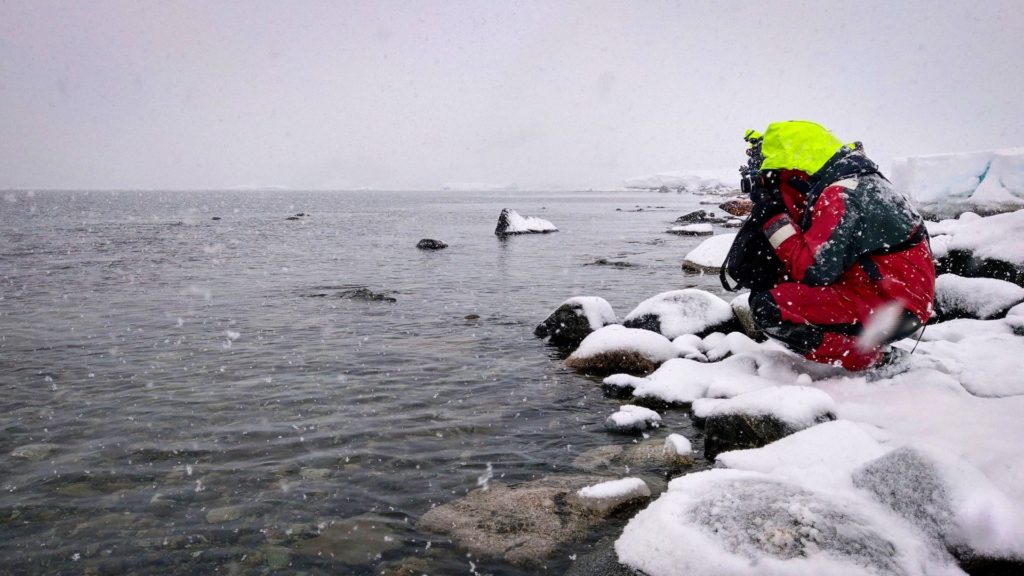
Almost the entire movie was made on Sony equipment:
- During the Ross Sea expedition (2015) it was mainly shot on the PXW-X70, a good compromise between quality and mobility, fixed lens, small, can be taken with you to the top of the mast.
- A7III / A7RIII – this was my choice during my cruise, my A/B camera body. I needed a movie camera a photo camera in one plus I had limited baggage allowances. Sony A7 series was the only full-frame stuff that connects these two features so the choice was quite obvious. I must mention here that I brought a photo reportage from my trip to Antarctica which received the 1st prize in the Polish photo press competition – Grand Press Photo (https://f11-photo.pl/below-60s) – which I think also confirms the fact that the choice of the camera was an excellent choice.
- FS5 + Shogun Inferno – this is my A camera set and it was of course used during Selma shoots. The only thing I have to mention here is that working in such a small film team (mostly it was only me) and in the conditions that prevail during a storm on a yacht, it is very difficult to shoot with equipment that requires preparation, rig and a little place to work with. I love the FS5 for its compact size but it was the A7 that I used mostly. The FS5 was mainly used in scenes shot on the shore or during Selma’s renovation. I also used it for interviews. It’s a pity that when I was on a cruise, there was no new A7S III yet, it would be an ideal candidate for such shots :))
- In addition to Sony cameras, of course, we used a whole set of sports cameras (various GoPros) for underwater shots and several drones (Mavic Air, Mavic Pro 2, Phantom).
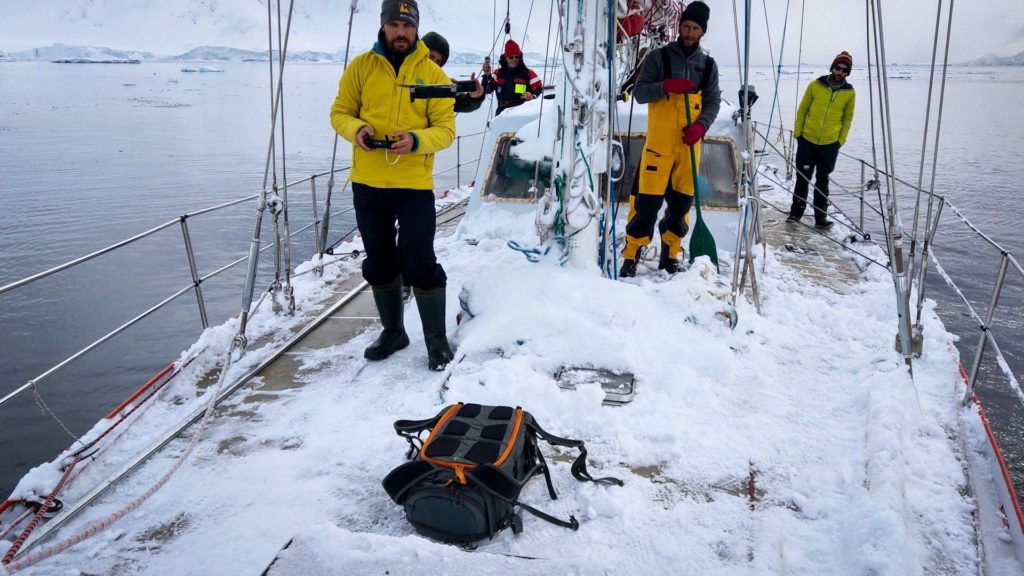
In addition to Sony cameras, of course, we used a whole set of sports cameras (various GoPros) for underwater shots and several drones (Mavic Air, Mavic Pro 2, Phantom).
Maciek Jablonski
Personally, I use fully manual lenses while shooting films – I like to have 100% control over focusing, I very often focus manually when I want, and when I have such a vision. I hardly use autofocus. During my Antarctic expedition I had one Sony lens with AF (Vario-Tessar® T * E 16 – 70 mm F4) but I hardly ever used it. My main set were mainly four bright, manual lenses: ZEISS Loxia 2.4/25, ZEISS Loxia 2/50, Voigtländer 35 mm/1:1,4 Nokton Classic, Voigtländer 65mm/1:2 Macro APO LANTHAR aspherical. I also had an adapter and 3 small manual Nikon lenses with me. Most of the photos were taken on the small space of the yacht so I didn’t take almost any long lens – the only semi-long lens I had was an old manual 100 mm, Nikon. This is also the fact for which I love Sony cameras – you can attach any optics you like to, those to which you have a sentiment or which you love. :))
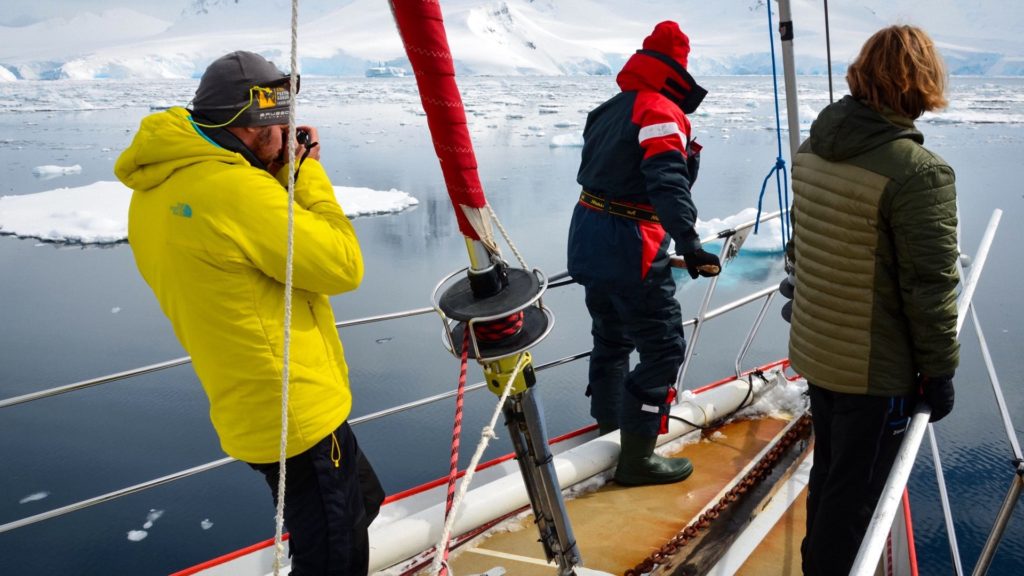
Personally, I use fully manual lenses while shooting films – I like to have 100% control over focusing, I very often focus manually when I want, and when I have such a vision. I hardly use autofocus.
Maciek Jablonski
Tips and tricks when shooting under extreme conditions
Y.M.Cinema Magazine: What are your tips and tricks (and takeaways) when shooting under extreme conditions?
Jablonski: I can collect them in points, it will be easier. These will be tips from the point of view of small film production and a small studio like my F11 are:
First of all, you should take care of yourself, your condition, your mind, let it be warm and so on. My greatest difficulty in taking pictures at sea was dealing with my weaknesses – these everyday ones, the nautical ones, such as seasickness – and forcing myself to work and focus on the picture. It was really hard sometimes. There is no universal recipe for how to cope with harsh shooting conditions but concentrate on framing and filming. Sometimes the recipe is a cup of hot tea, which is a critical situation that will be given by the captain himself. He knows how to motivate the crew.
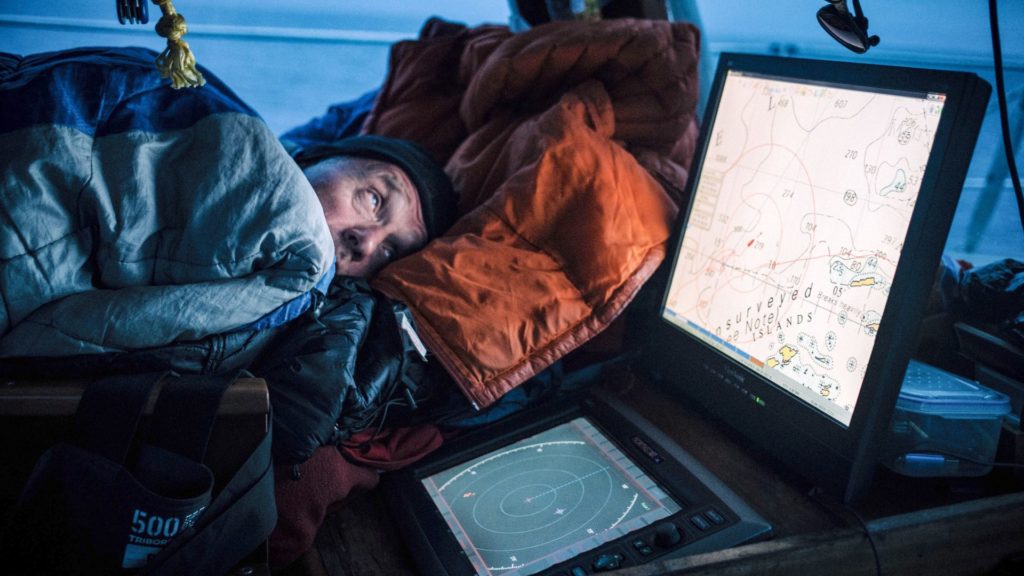
There is no universal recipe for how to cope with harsh shooting conditions but concentrate on framing and filming. Sometimes the recipe is a cup of hot tea.
Maciek Jablonski
The next thing is definitely the script. In the case of such a small production as mine at the time when I was going to the pictures, it was not 100% ready yet. So I went with my notes. I was very meticulous in preparing for my cruise and the idea for the movie itself. We collected the film material from Selma’s cruises, including those from the Ross Sea, we thought about what this film should be about, and together with my wife Iwona and Dominik Szczepański (script authors), we sat down to outline the script. I actually went on the cruise with only my own notes what kind of shoots I need to take in order to be able to tell the whole story. I went to sleep every day, ticking off the shots I have and those I still need on my list. And of course, I was open all the time to what fate would bring.
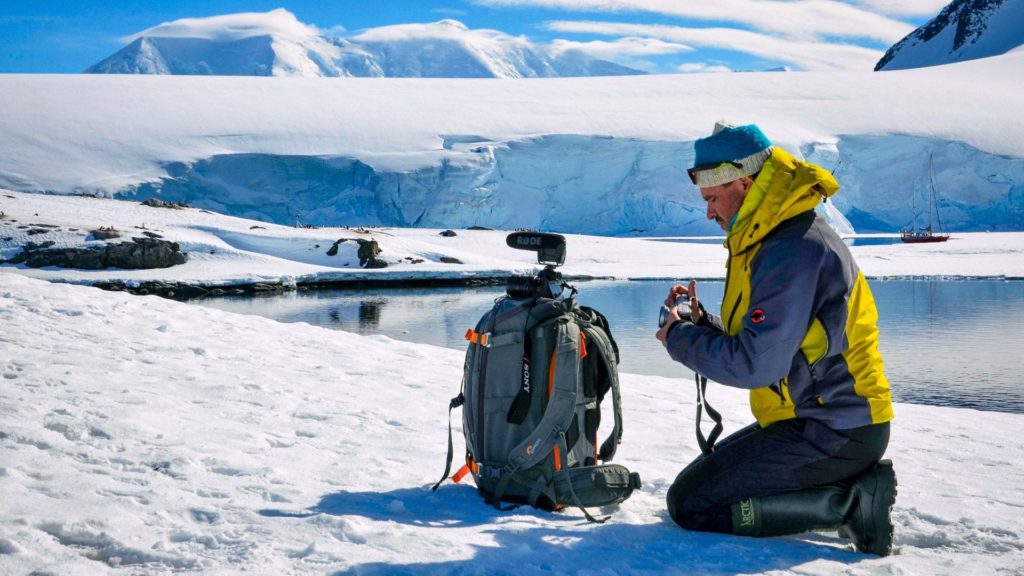
I went to sleep every day, ticking off the shots I have and those I still need on my list. And of course, I was open all the time to what fate would bring.
Maciek Jablonski
The last thing is definitely the filming gear. If you are not shooting a film in which the entire film crew participates, you must definitely plan it well. My shots during the yacht expeditions were determined mainly by a small film crew (it was mostly just me) + limited baggage allowances so I need to plan my camera bag very carefully. The photos in the whole movie are taken by 4 people, including me from my cruise. On the cruise, I was mainly involved in taking pictures, but the entire crew with the captain himself helped me in doing this. So there were days when we swam half a day between the icebergs to get a good shot. There were also those in which we sailed back and forth on some Antarctic canals while flying a drone over a swinging yacht and someone climbed the mast to “pose” what it was like to look for passage among drifting ice. All participants of Selma’s various cruises somehow contributed to the film’s production. On such yacht, there is not much space to take a lot of filming gear and in my case, so the “movie team” was also limited. I needed filming stuff that would be compact and give me cinematic quality. I think that even if I took a large camera with me, I wouldn’t be able to use it. Believe me that as the water spills over the yacht deck and you are at the end of the world your attention is really focused on something else than operating the big camera.
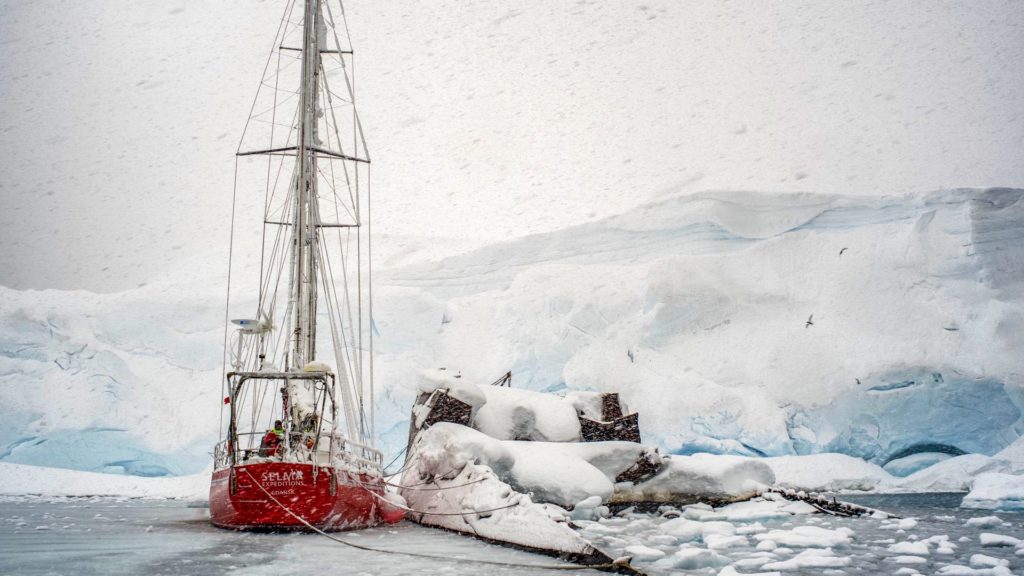
Believe me that as the water spills over the yacht deck and you are at the end of the world your attention is really focused on something else than operating the big camera.
Maciek Jablonski
This was my technical preferences according to film gear while filming in Antarctica:
- A full-frame sensor in a compact body,
- Internal image stabilization (no external gimbal was used during shots),
- Possibility to shoot in log (S-Log 3),
- Possibility to attach almost any 3rd external optics,
- Excellent battery performance,
- Solid-body construction + weather sealing,
- Ability to work in very low light conditions with almost no reduction in quality.
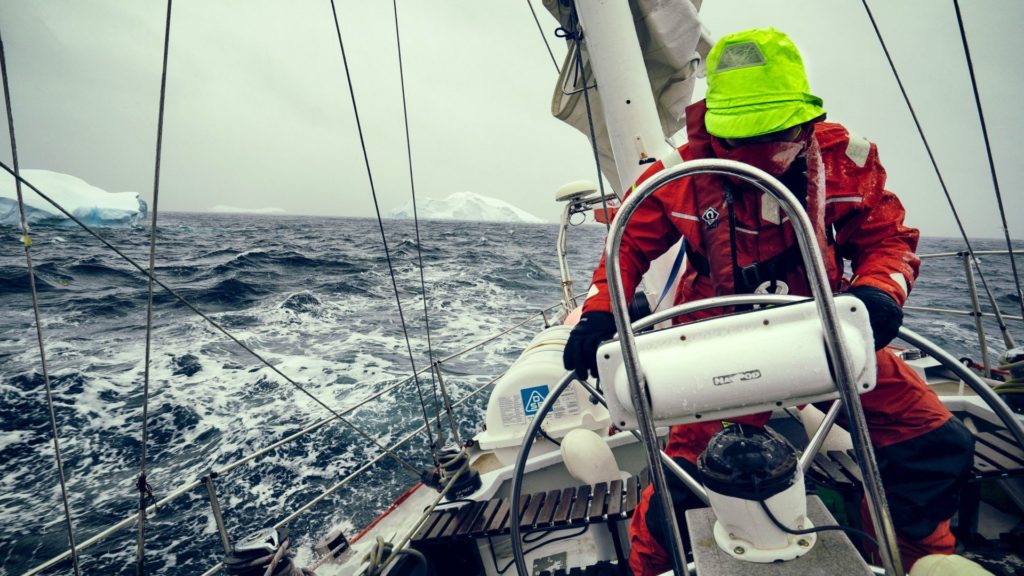
Post-production in the field
Y.M.Cinema Magazine: When and how did you manage to perform the post-production (including the backup of media and etc.).
Jablonski: I took my laptop with me, of course, but actually only to have some control over the recorded material, to be able to preview it and copy from the SD cards. Usually, I record the material on two media simultaneously (I have a backup then) and then I copy it to SSD disks (without removing it from the cards). When ripping the material from the cards, I immediately order it, having fresh shots in my head that I am really happy with. On the yacht and during my entire expedition, there were no conditions to do any post-production. I brought everything sorted on disks to the studio and only after my return did the real editing work on this film begin.
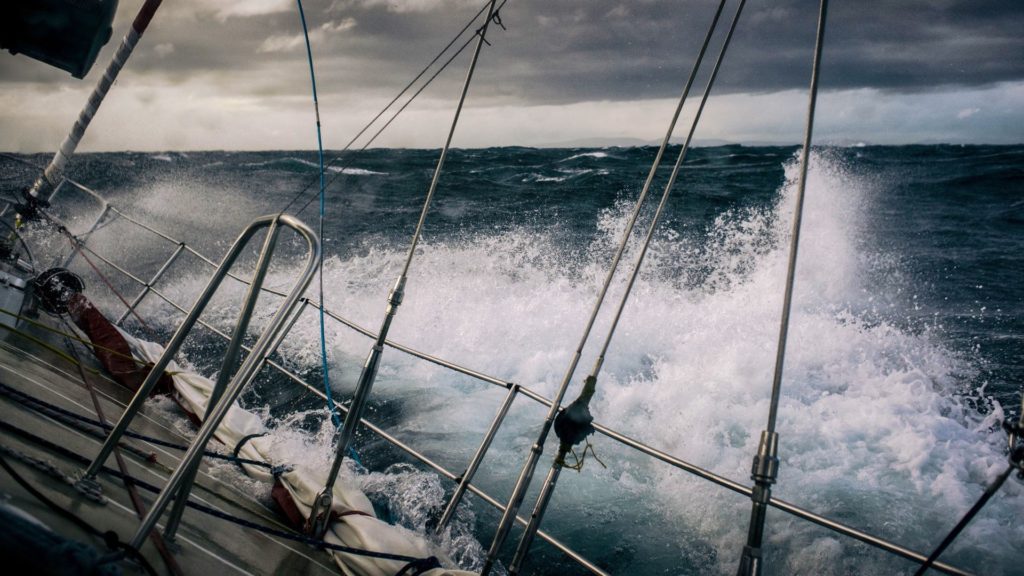
On the yacht and during my entire expedition, there were no conditions to do any post-production.
Maciek Jablonski
Funding
Y.M.Cinema Magazine: How did you manage to get NG funding this project? What is your advice for filmmakers that want to fund their projects by a brand like NG?
Jablonski: I think you can’t imagine a better partner for such a movie than National Geographic. Our movie was not sponsored by them however National Geographic Poland is its media patron. We financed the production of the movie 100% from our own pockets. However, I encourage you to search for NG global resources because there have nice grants there not only for film productions but for various scientific projects. I had a little easier task involving the local National Geographic in the media patronage due to the fact that I am their photographer – cooperating with them for many years. Another thing is that my wife is the artistic director of the local NG edition. Our media cooperation in this film was therefore limited to actually one meeting as I remember. It was an unprecedented, one-of-a-kind, unique project so I think it was also very interesting for them to engage in it. And that’s how it started… :))
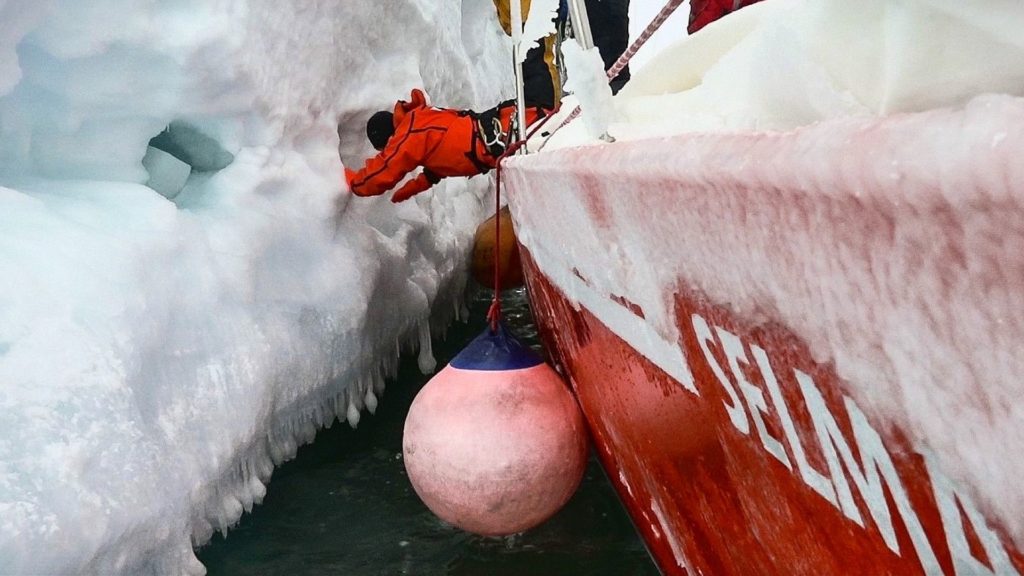
We financed the production of the movie 100% from our own pockets.
Maciek Jablonski
Extreme documentary challenges
Y.M.Cinema Magazine: Please elaborate freely on the challenges involved in shooting this kind of project.
Jablonski: Challenges…? I think a lot of things while making this movie were challenging. I was stressed out sometimes, but it was probably due to the fact that I was visiting Antarctica for the first time in my life and I had never been to such a virgin and wild continent. Exploring Antarctica nowadays should be much easier, we have modern and well-equipped yachts, modern navigation instruments, sailing is just a pleasure one can say. But seems that it is not just a matter of technological progress.
If you really want something, you can achieve it and you don’t necessarily have to be a millionaire to do it.
The weakest and strongest link has been and still is – the man. Antarctica is a different world, even today after just over 100+ years of its exploration. You need to cross the land like a Mordor (that one from Tolkien’s novel 🙂 ) which is the Drake Passage, a huge and dark ocean, and probably the strongest storms in the world that guards access to the last virgin piece of Earth. Then you can see probably the last paradise – face to face. And the expedition to the Ross Sea itself is one big unknown. You are sailing through a stormy ocean towards the sea where you must sail in through the Ice Barrier. You never know when it will freeze again, it might happen in a month or two. Then you have a chance to freeze in for the next 8 months – this was Shackelton’s case, their ship Endurance never got out of the ice after all. Having it all in your head you can really get stressed out. In few words – Making a documentary movie should be of course based on a script, but you still leave yourself a lot of space to react to the current situation, you don’t over-interpret, you try to convey what fate and the situation brings you at the moment. And this is perhaps the greatest value of the document – it is honest and true. At least that’s what it should be. :)))
There is a scene at the end of the film, in which Piotr tells about the fact that Ross Sea expeditions proved to himself that if you really want something, you can achieve it and you don’t necessarily have to be a millionaire to do it. In general, I like this film for the shots we brought from various cruises and, above all, for the fact that we made it with a minimum financial outlay. I like passionate people, I should be grateful to them that Selma’s film was made. :))
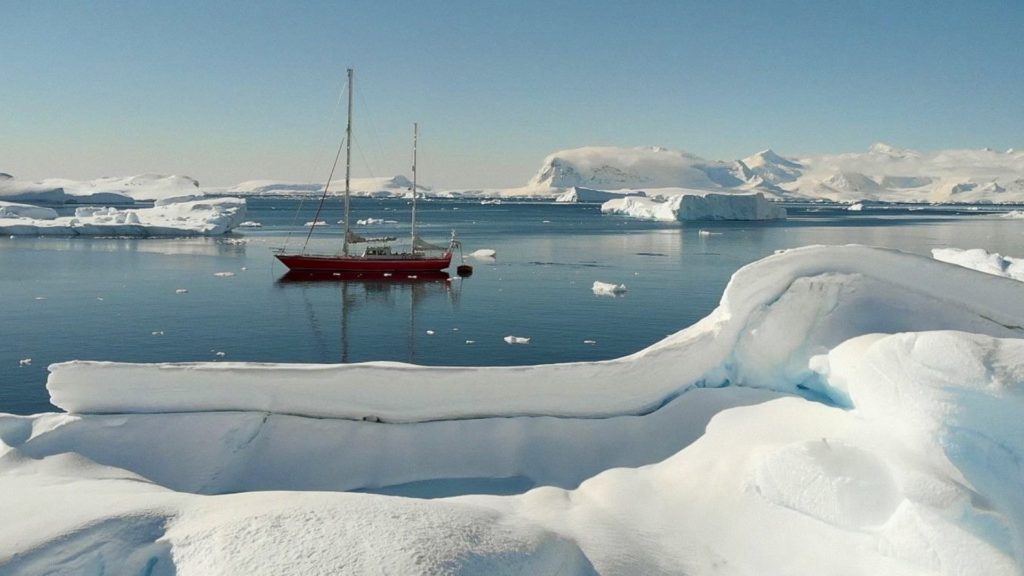
Making a documentary movie should be of course based on a script, but you still leave yourself a lot of space to react to the current situation, you don’t over-interpret, you try to convey what fate and the situation brings you at the moment. And this is perhaps the greatest value of the document – it is honest and true.
Maciek Jablonski
Takeaways
Y.M.Cinema Magazine: What did you take from this very demanding project?
Jablonski: I finished high school with a photography and film profile (MA, MSc) and for years I have been running a small business – a creative boutique – dealing with graphic design, photography, and film. A few years ago I decided that photography and film are something we want to focus on and now we actually realizing projects concentrating just on that. Most of our productions are rather short film forms – promotional and ads. “Selma” is my first feature documentary but I also have a movie from another event organized by our colleague – “Kilithon” – it was a 40-minute movie about the marathon from the Kilimanjaro summit. The realization of “Selma” took much more time. The nature of our films is rather small productions made mainly outdoors, in natural conditions, in which not everyone wants to work. We work mainly outside the studio, beyond the previously prepared set design. I prefer the conditions found in nature. “Kilithon” was shot during the Mount Kilimanjaro expedition and later during the run downhill – 5 days up, 24 hours down (excluding preparations and days after the run) – quite difficult matter with a heavy backpack, a tripod, when you have to focus on the shoots and composition, functioning normally in the meantime 😉
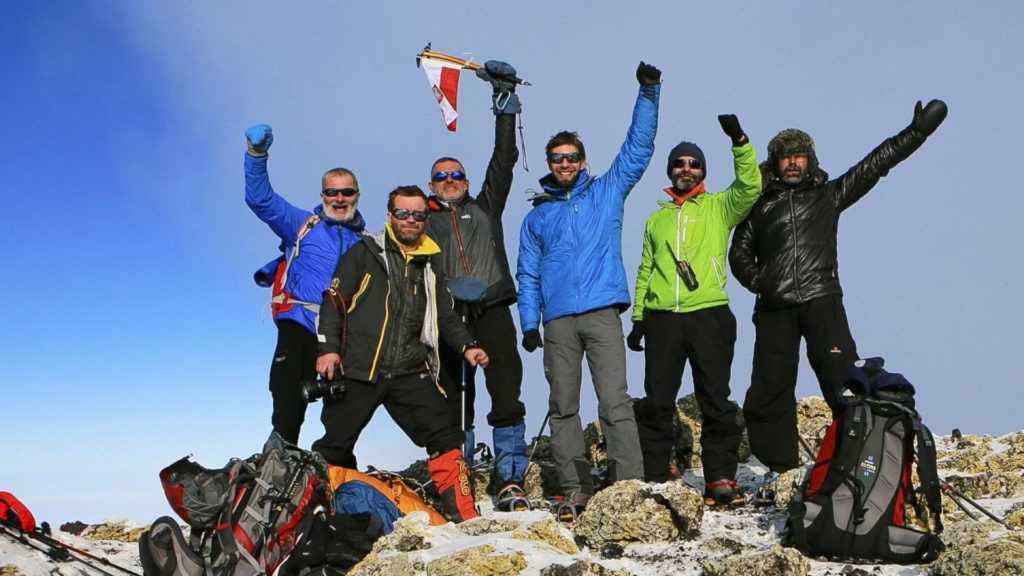
As if I had one sentence, to sum up why I made this film? I would like to say that for the love and respect for nature and great appreciation for people with passion… and of course for the huge passion of adventure.
Maciek Jablonski
“Selma” was definitely a movie that was made in the harshest weather conditions. For me it was the first meeting with Antarctica, the film contributed to the fact that I went on an expedition there. If I hadn’t thought about a movie, I probably wouldn’t have gone there. As if I had one sentence, to sum up why I made this film? I would like to say that for the love and respect for nature and great appreciation for people with passion… and of course for the huge passion of adventure. 🙂
Selma The Movie webpage: https://selmathemovie.com
Have been working on an ultra-challenging, interesting, and inspiring filmmaking project? Let’s know about it for a chance to get featured.

